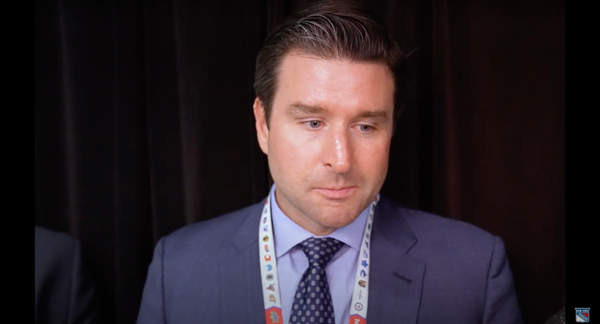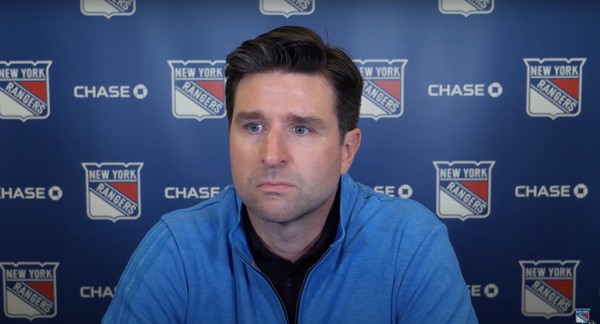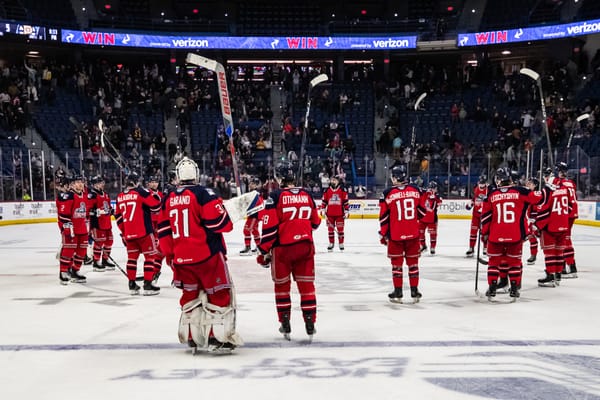The Rangers and Their History of Disappointment with #12
It’s been over 30 years since a Ranger wearing #12 has been associated with good times on Broadway
Aside from a player’s name, the first thing someone watching a hockey game will notice about them is their number. While retired numbers live on forever in team history, numbers still in circulation can still have some tendencies associated with the players that wear them. #6 has been a number the Blueshirts give out to “steady” defenseman known more for their defensive prowress and/or physicality. Dylan McIlrath, Anton Stralman, Jeff Woywitka, Wade Redden, Darius Kasparaitis, Doug Lidster, and Mark Tinordi (Jarred’s father!) all donned the number during their time on Broadway.
#28 is one generally associated with bit players in New York. Some of the team’s most infamous enforcers have donned the number, with John Scott, Colton Orr, P.J. Stock, and Tie Domi seeing their jerseys bloodied often. Dominic Moore wore #28 during his second stint with the Rangers, and he has been followed by Taylor Beck, Paul Carey, Phil Di Giuseppe (before switching to #33) and Lias Andersson.
Don Maloney wore #12 throughout his Blueshirts’ tenure. Over parts of eleven seasons, the younger of the two Maloney brothers recorded over 500 points in 653 games before being dealt to the Hartford Whalers during the 1988-89 season. Since trading Maloney, 21 different players have donned a #12 sweater for the Rangers, and they’ve combined to skate in 741 games.
The first player to wear #12 after Maloney’s departure was rugged winger Kris King. King wore #12 during the 1989-90 and 1990-91 seasons before switching to #19 for another season and a half. King set career highs in goals (11), assists (14), points (25), and penalty minutes (286) during his time in the #12 sweater on Broadway. Unfortunately, King had the most individual success of any Ranger to wear #12 in the post-Maloney era, as the rest of the list is depressing to reminisce on from here on out.
Tim Kerr had recorded 54+ goals and 84+ points in four consecutive seasons as a Philadelphia Flyer from 1983-87. After missing all but eight games in 1987-88, Kerr had a nice bounce back season in 1988-89, posting a 48-40-88 stat line in 69 games en route to winning the Bill Masterton Memorial Trophy. After another two injury plagued yet productive (34-38-72 in 67 GP) seasons in Philadelphia, Kerr was left exposed in the Expansion Draft, selected by San Jose, and dealt to the Rangers. Kerr posted a 7-11-18 stat line in 32 games in his lone season in New York, was traded to the Hartford Whalers for a 7th round draft pick afterwards, and was out of the league after one final season in Hartford.
Eddie Olczyk profiles similarly to Kerr. Olczyk arrived in New York in exchange for the previously mentioned Domi and King on December 28th, 1992. Olczyk joined the team on the heels of five consecutive 30+ goal, 65+ point seasons with the Toronto Maple Leafs and Winnipeg Jets. Olczyk wore #12 for the remainder of 1992-93 and the entirety of 1993-94, and his production was a far cry from before coming to New York. A 16-21-39 stat line in 83 games prompted Olczyk to switch to the #16 he’d worn with previous teams, but that switch lasted another 20 unproductive games before getting shipped back to Winnipeg during the lockout shortened 1994-95 season.
Aside from ten games of Hartford Wolfpack legend Ken Gernander wearing #12 in 1995-96, the number went unused for a few seasons after Olczyk’s departure. Mike Keane played 70 uninspiring games of his 1,161 game career donning #12 for the Rangers during the 1997-98 season, and he was shipped to the Dallas Stars for a package that included Bob Errey. Errey immediately took the vacated #12, and went scoreless in what were the final 12 games of an 895 game career for him.
Next in line to wear #12 was Rich Brennan. Like Keane, Brennan was a defenseman who had five other stops along his journey as an NHL player. Unlike Keane, Brennan was more of a “AAAA” player whose NHL stints all came as cups of coffee in the league. Brennan skated 24 of his 50 career NHL games with the Blueshirts in 1998-99, and scored four of his eight career points in those games.
The 1999-00 season saw the Rangers acquire a former 1st overall selection and attempt to turn his career around. Unfortunately for Alexandre Daigle, he chose to wear #12 during his lone season in New York, all but dooming him to yet another season of lost potential. Daigle’s numbers on Broadway were’t terrible in a vacuum (8-18-26 in 58 GP), but it was enough that he found himself out of professional hockey for the following two seasons afterwards before returning to the NHL in 2002.
After the Daigle experiment failed, #12 went almost completely unused until 2008. Dixon Ward returned from a season in Switzerland and attempted to re-establish himself as an NHLer with the Blueshirts. That attempt resulted in eight scoreless games in the NHL, a nearly point per game season with AHL Hartford, and a return to Switzerland after the season. Ken Gernander returned to the NHL for a two game cup of coffee in 2003-04, wearing #12 once again. Aside from them, the number went unused until Pat Rissmiller, the inspiration for this article.
Rissmiller signed a three year, $3 million contract prior to 2008-09. He skated in two NHL games as a Blueshirt before being demoted to the AHL, spent the better portion of the next two seasons there, and was packaged with Donald Brashear and sent to the Atlanta Thrashers in exchange for another number of the cursed #12 club, Todd White. Only two years removed from a career high 73 point season, White lasted 18 games in New York, posting a 1-1-2 stat line before being sent to AHL Connecticut and washing out of hockey.
White’s washout occurred during the 2010-11 season, but the 2009-10 season saw both Ales Kotalik and Olli Jokinen wear #12 for the Rangers. Kotalik was traded away to Calgary 45 games into a three year contract in a package that included Olli Jokinen, and it’s pretty hard to forget why Jokinen added to #12’s cursed legacy.
Jesper Fast was the next Ranger to wear #12, as he wore during his eleven game NHL stint in 2013-14 before switching to #19 (and later #17 when #19 was retired) the following season. Next was Lee Stempniak, whose only disappointment with the Rangers was how short his tenure was. The 9-9-18 stat line he posted in 53 games may have been modest, but the Rangers’ decision to trade him to Winnipeg at the trade deadline for table scraps came back to bite them when Mats Zuccarello missed a majority of the 2015 playoff run.
2015-16 was another season that saw two different players don #12, and it was as ghastly as the 2009-10 season. New York’s penalty kill was in need of help midway through the season, and Jeff Gorton thought Daniel Paille, who had a 1-3-4 stat line in 31 games with AHL Rockford at the time, was the answer. Paille played the final 12 games of his NHL career in New York before being demoted to Hartford and leaving for Europe during the offseason.
After Paille’s demotion, the Rangers opted for a much bigger acquisition in Eric Staal. Coming two Broadway with high expectations after being acquired for a high price tag from Carolina, Staal disappointed with six points in twenty regular season games and a pointless five game playoff performance. While he looked primed to wash out of the league after that, Staal moved on to Minnesota and experienced a career resurgence that included a 42 goal season, the second highest total of his seventeen season career.
Matt Puempel followed Staal as the next #12 for the Blueshirts. He scored a hat trick that one time against Arizona, but other than that was just a warm body that manned the 4th line during the 2016-17 season. Ditto for Peter Holland, although his time came during the 2017-18 fire sale, and the players that formed New York’s post-deadline roster that season are ones we’d all like to forget.
Julien Gauthier looked like the next player in line to follow Puempel and Holland his first two seasons in New York. Thankfully, the big bodied winger switched from #12 to #15 prior to this season, and has since begun to carve out a nice role for himself on Gerard Gallant’s third line. That brings us to the current #12, Patrik Nemeth. Brought on to shepherd Nils Lundkvist through his rookie season, Nemeth has struggled mightily out of the gate with the Rangers after years of strong defensive play in previous NHL stops.
For one reason or another, #12 has been a cursed number for the last 30+ years of Rangers hockey. Good players and bad players alike haven’t been able to make strong impacts on the team while wearing a blue #12 sweater. Maybe Patrik Nemeth will turn things around and break the tradition, but if he can’t, he’ll become another player #12 has claimed as a victim on Broadway.





